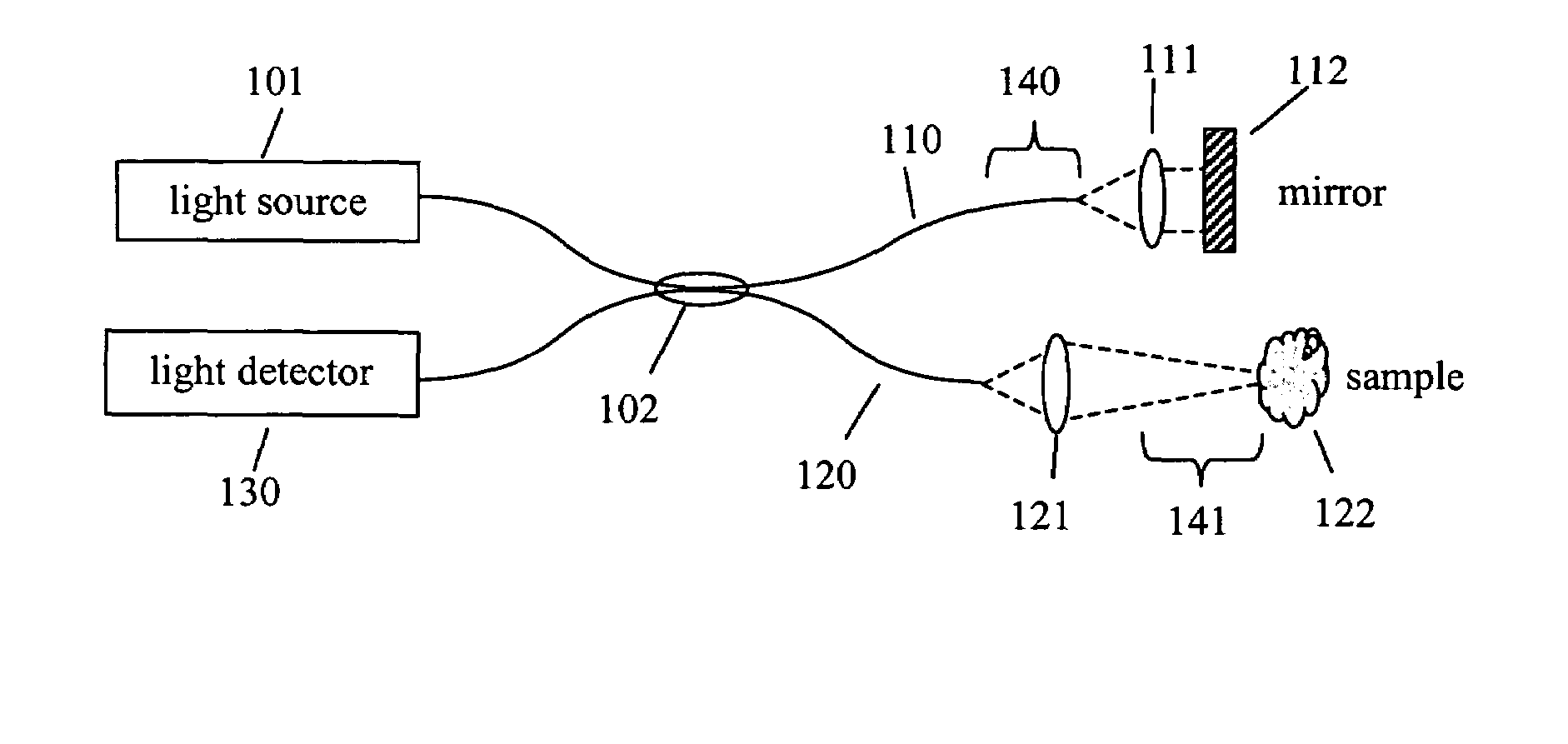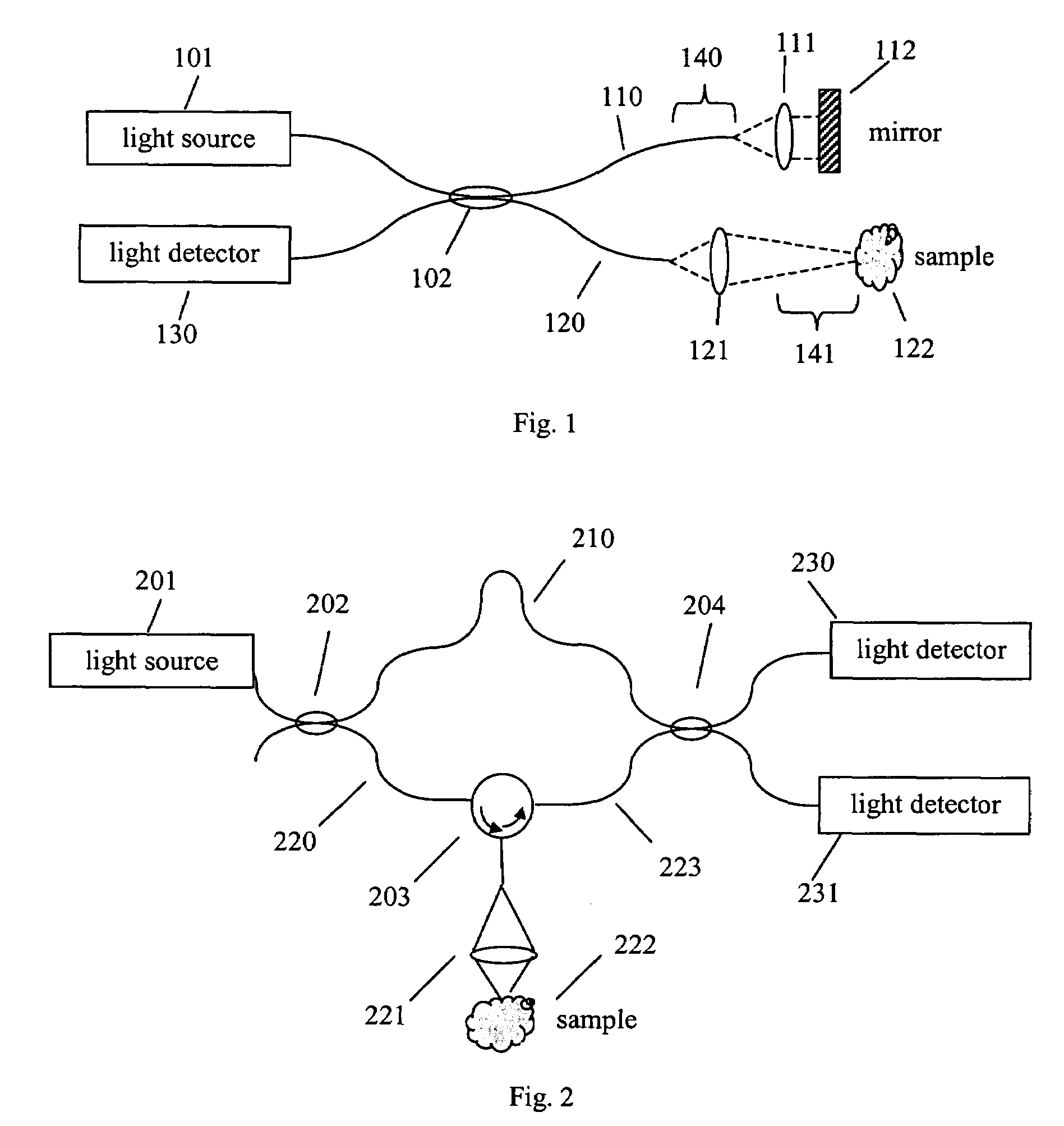Method to suppress artifacts in frequency-domain optical coherence tomography
a technology of optical coherence tomography and frequency domain, applied in the field of optical imaging, can solve the problems of complex and costly sequential phase shift, add cost to frequency domain oct, and leave some residual image, etc., and achieve the effect of chromatic dispersion differen
- Summary
- Abstract
- Description
- Claims
- Application Information
AI Technical Summary
Benefits of technology
Problems solved by technology
Method used
Image
Examples
Embodiment Construction
[0032]Implementations of swept-source OCT are described by Swanson and Chinn (U.S. Pat. No. 5,956,355) and a modern implementation of spectral-domain OCT is described by Wojtkowski, et al. (Optics Express 12: 2404-2422). The common features of these two frequency-domain OCT techniques are reviewed here.
[0033]FIG. 1 illustrates an example of an OCT interferometer. Light from source 101 is directed to beamsplitter 102, illustrated here as a fiber beamsplitter, that separates light from the source between the reference fiber 110 and sample fiber 120. Some light directed toward sample 122 by lens 121 is scattered by the sample and returned through sample path 120. Some light collimated by lens 111 and reflected from the reference mirror 112 is returned through reference fiber 110. Light returned from the mirror is combined with light returned from the sample in beamsplitter 102 to form an interference signal, and some of the combined light is directed to the detector 130.
[0034]In freque...
PUM
| Property | Measurement | Unit |
|---|---|---|
| thickness | aaaaa | aaaaa |
| optical path length | aaaaa | aaaaa |
| optical path length | aaaaa | aaaaa |
Abstract
Description
Claims
Application Information
 Login to View More
Login to View More - R&D
- Intellectual Property
- Life Sciences
- Materials
- Tech Scout
- Unparalleled Data Quality
- Higher Quality Content
- 60% Fewer Hallucinations
Browse by: Latest US Patents, China's latest patents, Technical Efficacy Thesaurus, Application Domain, Technology Topic, Popular Technical Reports.
© 2025 PatSnap. All rights reserved.Legal|Privacy policy|Modern Slavery Act Transparency Statement|Sitemap|About US| Contact US: help@patsnap.com



